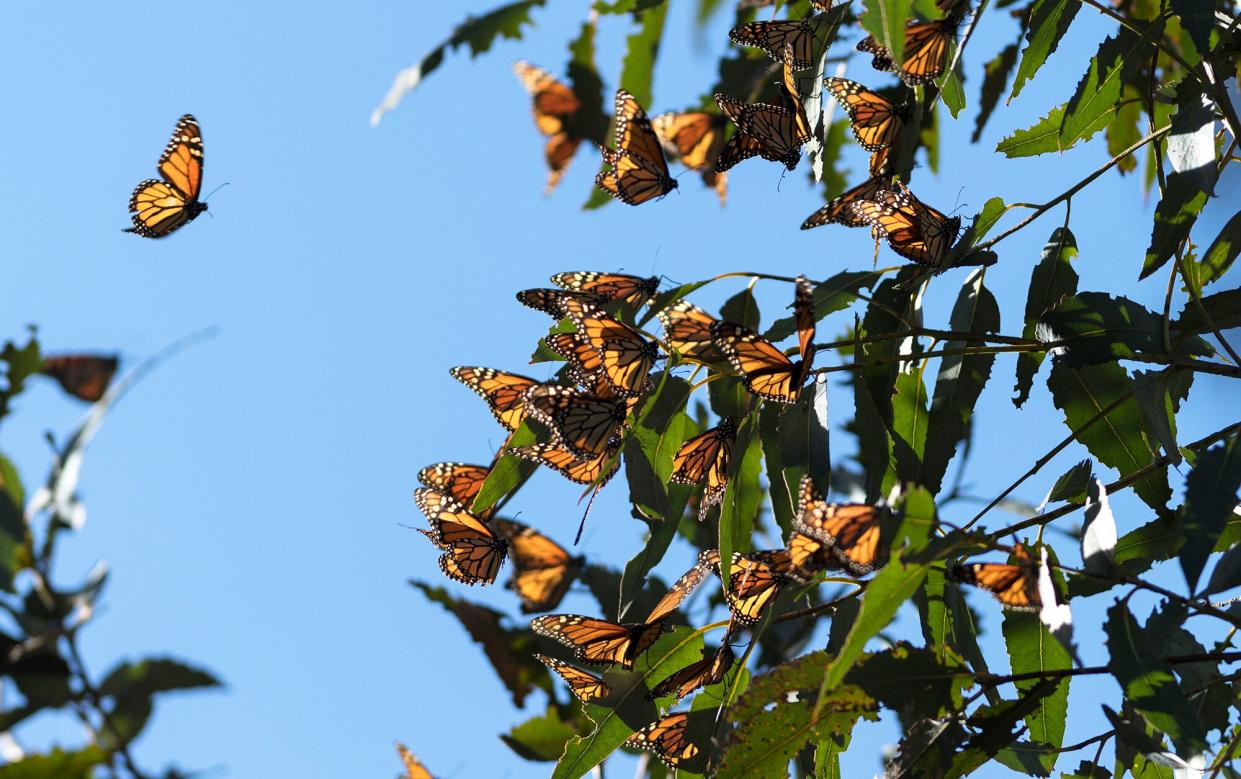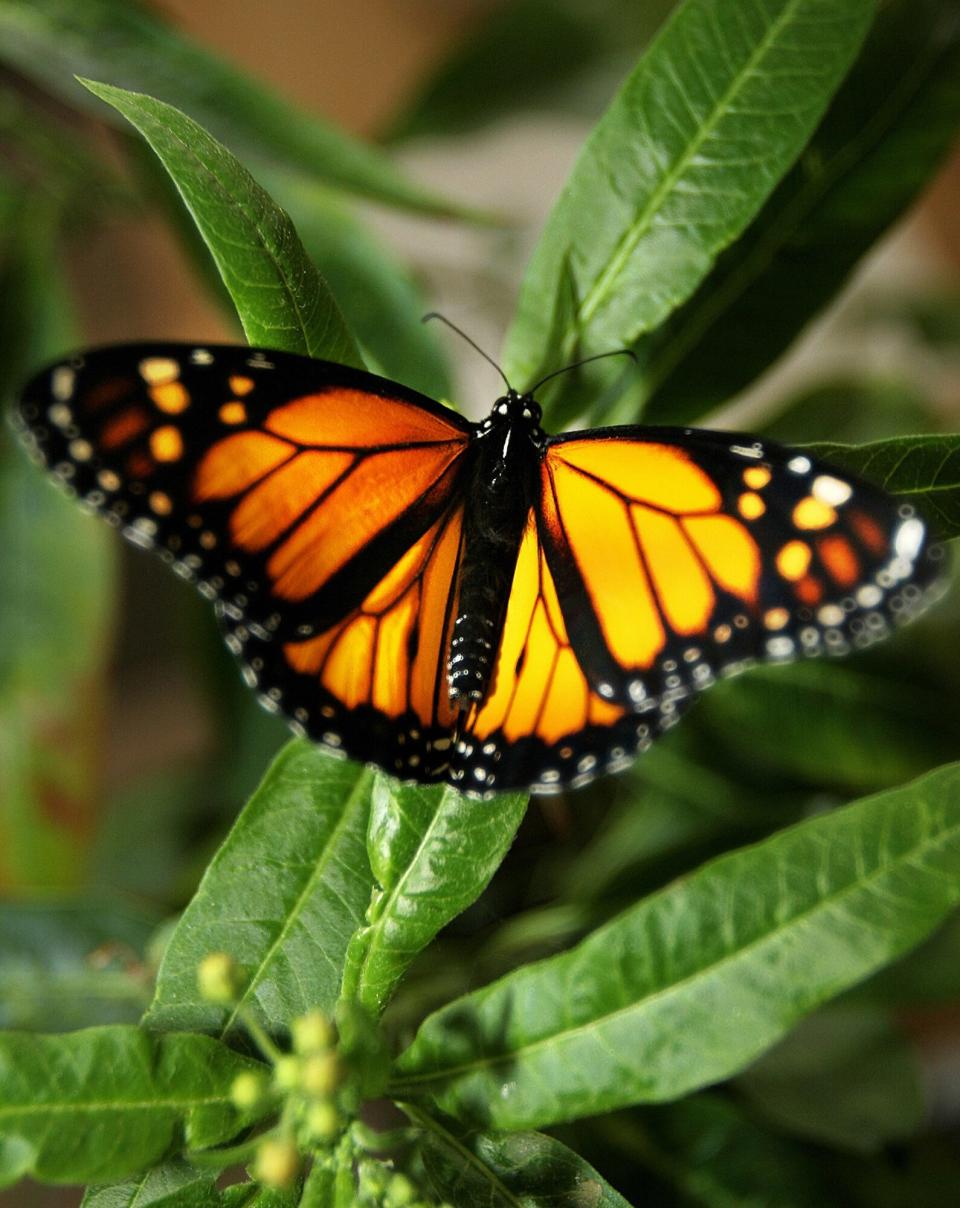Conservation Organization Lists the Migratory Monarch Butterfly as an Endangered Species

Yichuan Cao/NurPhoto via Getty Monarch butterflies
One of North America's most recognizable insect species, the migratory monarch butterfly, has been added to International Union for the Conservation of Nature's (IUCN) endangered species list, the organization announced Thursday.
According to the Associated Press, the designation of "endangered" on the IUCN's Red List places the eye-catching orange and black creatures two steps away from extinction.
Aside from its beautiful coloring, the migratory monarch, a subspecies of the monarch butterfly, is known for making long journeys. The insects spend the summer in Canada and the northern United States and then migrate to California and Mexico for the winter, the IUCN explained in their release on the migratory monarch butterfly's endangered status.
RELATED: Federal Judge Restores Endangered Species Act Protections Weakened by Trump Administration
According to IUCN, the world's migratory monarch butterfly population has declined between 22% to 72% over the past ten years.
Nonmigratory monarch butterflies, which live in Central and South America, were not added to the IUCN's Red List, the AP explained.
The migratory monarch butterfly's decline is due to many factors, the IUCN shared, including loss of habit, the use of pesticides, and climate change.

SUSANA GONZALEZ/AFP/Getty Monarch butterfly
Migratory monarch butterfly populations are separated between west and east, with the western population at greater risk of going extinct after declining by an estimated 99.9% between the 1980s and 2021. At one point, there were as many as 10 million butterflies in the western population; as of 2021, there were just 1,914.
The eastern population is larger but is still declining, shrinking by 84% from 1996 to 2014.
The update from IUCN also explained that all of the surviving sturgeon species "are now at risk of extinction due to dams and poaching, pushing the world's most Critically Endangered group of animals yet closer to the brink."
RELATED: Endangered Lion Cub Dies Weeks After Her Birth at Tennessee Zoo: 'Heartbreaking Loss'
"Today's Red List update highlights the fragility of nature's wonders, such as the unique spectacle of monarch butterflies migrating across thousands of kilometers," Dr. Bruno Oberle, the IUCN's director general, said in a statement. "To preserve the rich diversity of nature we need effective, fairly governed protected and conserved areas, alongside decisive action to tackle climate change and restore ecosystems. In turn, conserving biodiversity supports communities by providing essential services such as food, water, and sustainable jobs."
The IUCN included good news in its update, explaining that there has been a 40% increase in the population of tigers worldwide since their last tiger assessment in 2015.

